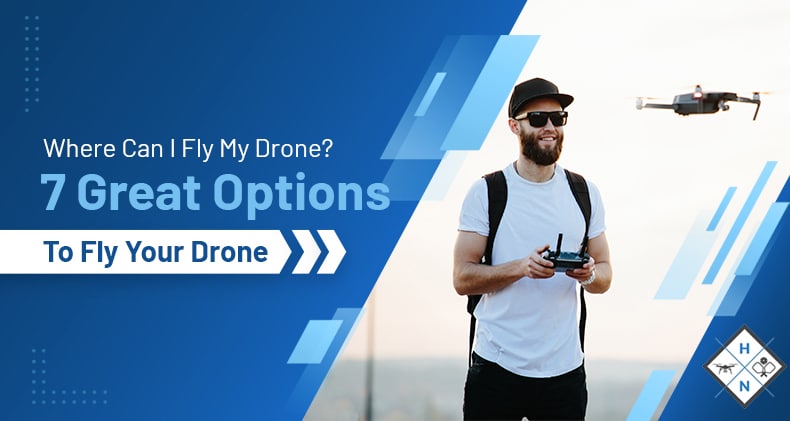Once you have a drone you'll want to find someplace where you can fly it. It's important that you find places that will allow you to fly your drone legally so you don't get into trouble with your new hobby.
There are a lot of great places where you can fly your drone legally today including public parks, national forests, state parks, private property, airports in uncontrolled airspace, beaches, and any other airspace that's certified as Class G airspace. Fortunately a lot of these places do exist.
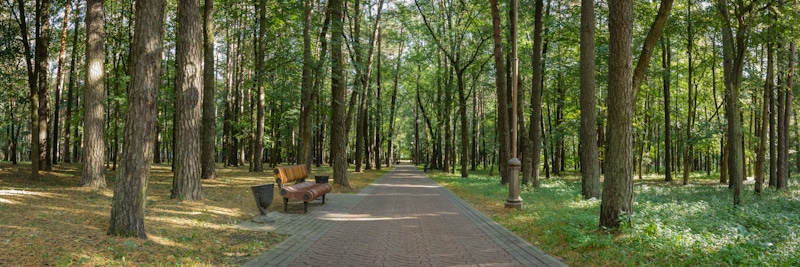
Public Parks
A public park is a common space that the local government maintains. There are a lot of these spaces that are maintained by various communities throughout the United States today. While they'll vary in size depending upon the neighborhood they're located in, typically they're smaller than a national park. These parks are open for everyone to enjoy so they may include a playground, paved walkway, pond, and other amenities.
You're allowed to fly your drone in a public park but you must pay attention to the specific regulations of that park because each park will have different directives. You may even find a park that won't let you fly your drone there but this only happens occasionally. More frequently you'll be told when you can fly there or you may have staff ask you to move to another location in the park so you aren't disturbing anyone or anything while you're flying your drone.
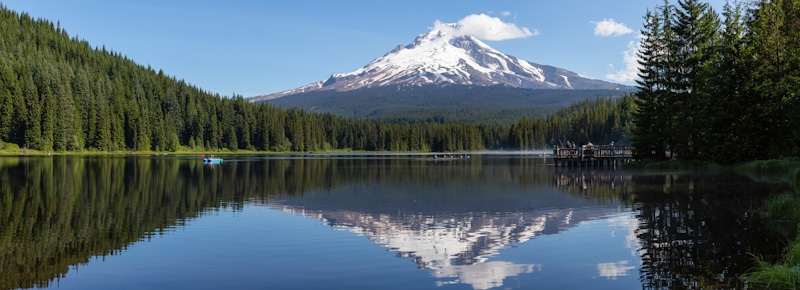
National Forests
Although you're not allowed to fly your drone in national parks or around national monuments, the law does say that you are allowed to fly your drone in national forests. Unlike National Parks which fall under the jurisdiction of the Department of the Interior, National Forests fall under the jurisdiction of the U.S. Department of Agriculture (USDA). This is why you'll find very different policies regarding drones in these two areas and why you'll be allowed to fly your drone in a national forest.
Unless you're using your drone for commercial photography or videography you won't even need to have a special use permit to fly your drone in a national forest. These permits are meant specifically to give drones permission to go into those areas where the general public isn't allowed to enter and to allow the drone operator to use models, sets, or props if necessary. Since you're probably flying for recreational purposes, you can fly your drone without concerning yourself about any of these things. Just make sure you avoid flying near a campground or trail as the FAA clearly prohibits the flight of drones over people, moving vehicles, or vulnerable property (e.g. a wilderness area).
Since you need to be careful when flying near a wilderness area (a.k.a. vulnerable property) you should know what this means. According to the law, "wilderness" is defined as a delicate natural environment that is being protected in such a way that human impact must be minimalized. This is why motorized vehicles and equipment aren't allowed in certain areas of the national forest. It's also why you should pay attention to any signage that's located in these areas while you're flying your drone.
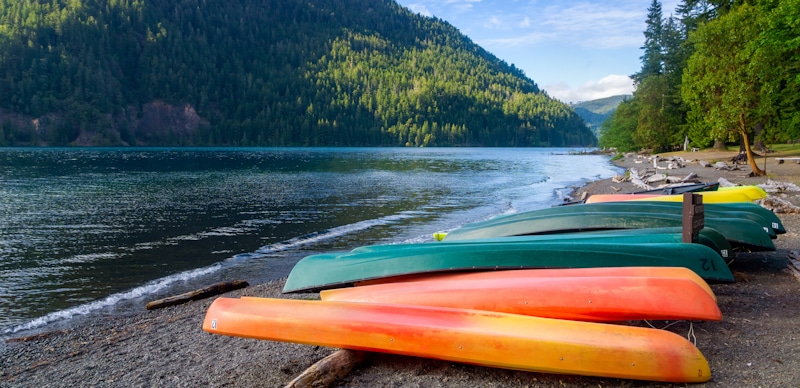
State Parks
Whether or not you can fly your drone in a state park will depend on what state park you're visiting. Not only will you need to pay attention to this but you must also pay attention to the differences in regulations depending on what state, county, or city you want to fly your drone in. You'll also need to make sure that there isn't an airport located within 5 miles of the state park.
This is why you'll want to take a moment to look at the specific rules that have been set up for the park you plan to visit. Failure to abide by the rules could result in heavy fines being levied and your drone and its gear being confiscated. Therefore it's worth talking to the park ranger just to make sure you're allowed to fly your drone in the specific state park you're in.
Private Property
Since the FAA only regulates airspace over 400 feet there aren't any federal laws that state that you can't fly a drone over private property. However, you should take into consideration whether there are any local laws or regulations regarding drone flight. Since these will vary depending on your location they're more challenging to keep up with.
Most states and local jurisdictions will allow you to fly your drone on private property as long as you're not breaking any laws that have to do with the invasion of privacy, trespassing, or creating a nuisance. For instance, if you want to fly your drone in Oregon you'll want to make sure you stay on your own private property unless you have the explicit permission of your neighbor to fly on their property too. While you'll be allowed to make the mistake of flying there once, any more and it's deemed illegal.
Airports in Uncontrolled Airspace
"Uncontrolled airspace" is defined as any airspace where there's no need to have an Air Traffic Control service or there are practical reasons for not providing one. The ICAO (International Civil Aviation Organization) has deemed this as "Class G" airspace.
To determine what Class G airspace is you'll first need to know where Class E airspace ends (there's no Class F airspace). Typically this airspace is found under 1,200 feet since this is the point at which Class E airspace typically starts. You'll also find Class G airspace at lower altitudes in those areas of the country where IFR (instrument flight rules) operations aren't as common.
When you're flying near an airport that's in Class G airspace and your drone remains under 400 feet AGL (above ground level) you won't need any type of prior authorization. However, you'll still need to pay attention to traffic patterns and takeoff and landing areas so that your drone doesn't interfere with them. Whenever you're flying your drone in one of these areas you're responsible for yielding the right of way to the other aircraft that are in the area.
Beaches
While you may see people flying their drones on the beach, it hasn't been clearly stated by the government whether or not this is legal. Therefore the first thing you'll want to do here is taking a look at the area's local drone regulations. If you're not seeing anything stating that you shouldn't fly your drone on the beach there, you should then take a look at the rules that have been laid out by the FAA.
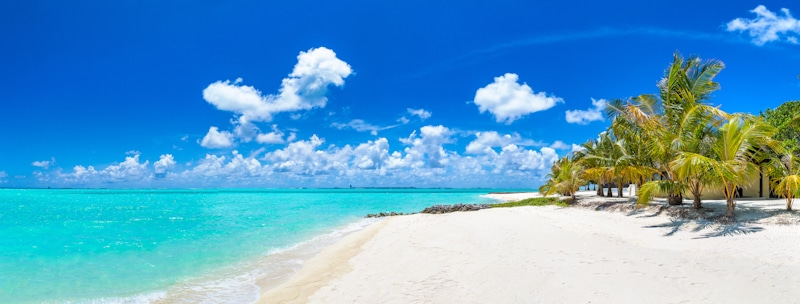
When you find somewhere that's legal for you to fly your drone on the beach you should still remember the guidelines for neighborly drone use. According to these guidelines you should:
- Tell people if you plan to take any photos or videos of them (preferably tell them before doing so)
- Respect a person's privacy unless you have a really good reason not to (e.g. don't film or photograph people who don't want to be filmed or photographed)
- Never use your drone to harass people
- Never gather personal information about someone unless you have to (If you have to gather personal information about someone only keep it for as long as you have to.)
Class G Airspace
While there are a lot of different designations regarding airspace as a drone operator you'll want to be on the lookout for what's known as "Class G" airspace. This is what's known as "uncontrolled airspace" – an area that no radio communication is necessary for. This airspace is located beneath 14,500 MSL (mean sea level). Here there aren't any entry or clearance requirements for drones or IFR operations mainly because this airspace is located so near to the ground (1,200 feet or less).
When you're flying your drone in one of these areas you'll need to pay attention to VFR (visual flight rules) visibility requirements. Throughout the daytime, these requirements are set to one mile but they do increase up to three miles at night. Exceptions to this rule do exist. Typically this is because you'll be dealing with something like mountainous terrain (e.g. in the Rocky Mountains) or you're flying in a very sparsely populated area (e.g., some parts of Montana and Alaska). It's also important for you to maintain a safe flying speed for your drone at all times.
You can fly your drone anywhere that falls within Class G airspace as long as you operate within the restrictions of this airspace – something that there's relatively few of unless you're operating your drone for commercial purposes.
Conclusion
Now that you have your drone and lots of places where you can fly it legally, it's time to have fun doing so. Whether you choose to fly in public parks, national forests, state parks, private property, airports in uncontrolled airspace, beaches, and any other airspace that's certified as Class G airspace you'll have plenty of places where you can have fun.
Shawn Manaher loves to play with new toys and dive into new hobbies. As a serial entrepreneur, work definitely comes first but there is always room for hobbies.

